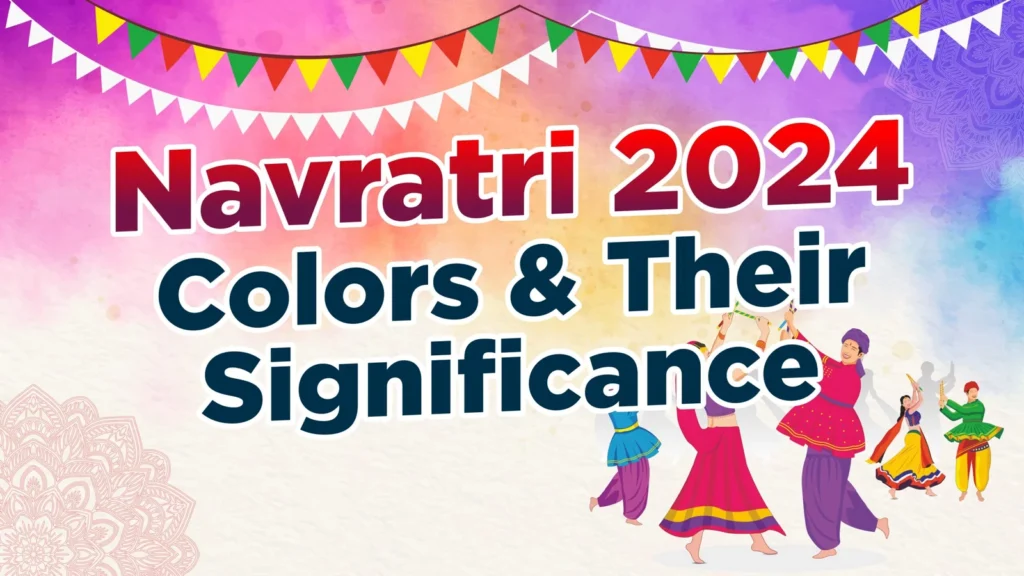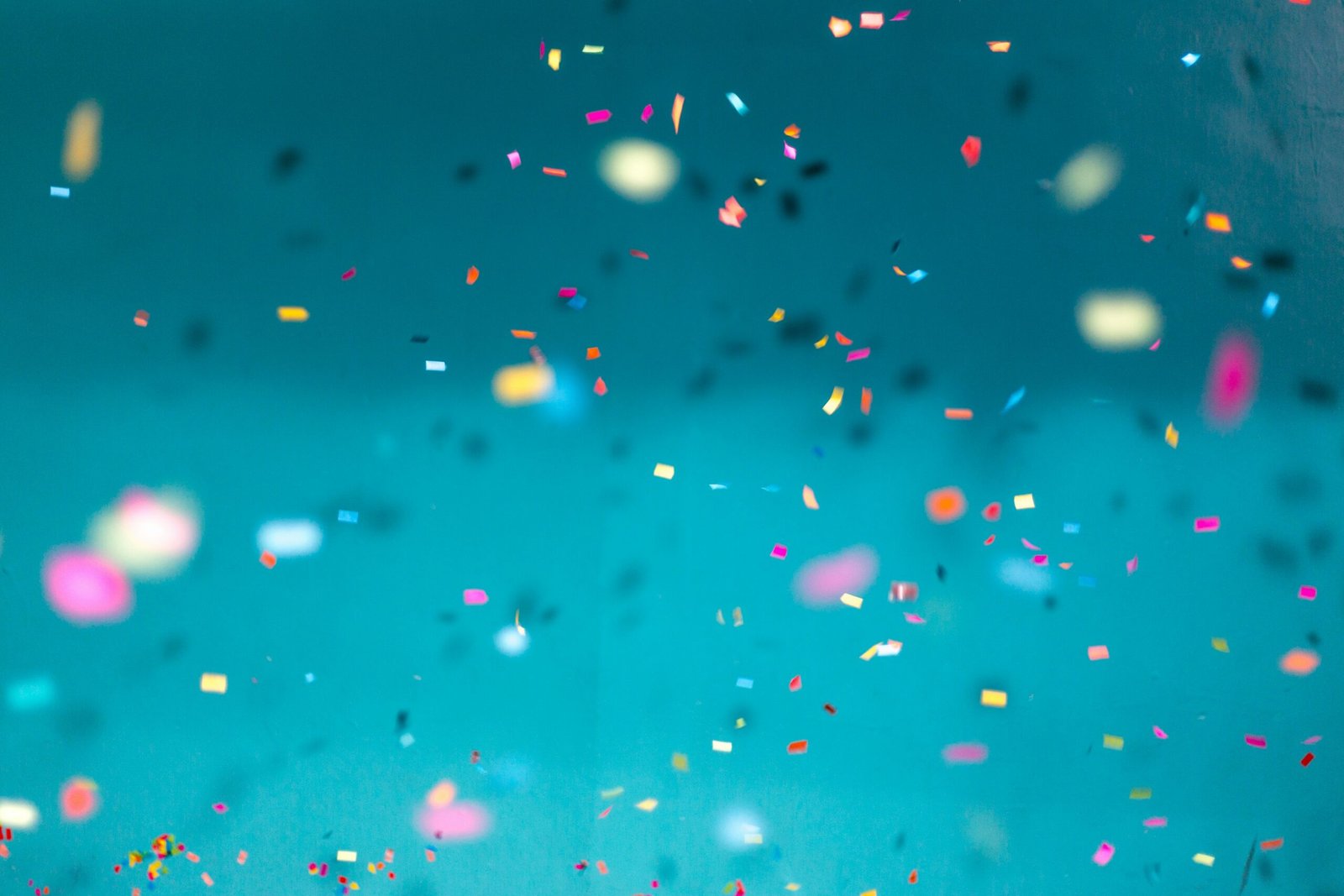Understanding Navaratri 2024: Significance, Rituals, Colors, and Prasad

Table of Contents
What is Navaratri?
Navaratri, translating to ‘nine nights’ in Sanskrit, is a significant Hindu festival celebrated with fervor across India and in various parts of the world. Scheduled for 2024, Navaratri encompasses nine nights dedicated to the worship of Goddess Durga, who epitomizes the divine feminine energy and the triumph of good over evil. The significance of Navaratri lies deeply rooted in mythology, symbolizing the victory of the goddess over the buffalo demon Mahishasura, representing the eternal struggle between righteousness and malevolence.
Historically, the celebration of Navaratri can be traced back over a millennium, evolving through the ages. During these nine nights, devotees engage in various rituals that honor the goddess in her numerous forms, including Durga, Lakshmi, and Saraswati. Each day of Navaratri 2024 is dedicated to a specific incarnation of the goddess, signifying different aspects of life and spirituality. This diversity in worship not only showcases the richness of Hindu culture but also highlights the importance of feminine energy in the religious landscape.
In addition to its religious dimensions, Navaratri serves as a cultural festival bringing together communities and enforcing social bonds through communal prayers, dances, and songs. The rituals performed during this period, including fasting, prayers, and offerings, are designed to purify the body and mind while seeking blessings from the goddess. The vibrant colors associated with each day of Navaratri carry their own significance, symbolizing qualities such as purity, growth, and liberation. Participating in this festival enhances one’s connection to the divine and serves to reinforce the ideals of compassion, dedication, and strength.
When is Navaratri Celebrated in 2024?
Navaratri 2024 is anticipated to begin on the 10th of October and conclude on the 18th of October. This annual festival, integral to Hindu culture, follows the lunar calendar, specifically falling under the month of Ashwin (Shukla Paksha). The timing of Navaratri is not merely a date on a calendar; it holds profound relevance both culturally and agriculturally. As the season transitions from monsoon to autumn, it embodies the rejuvenation of life and nature, making it an essential period for various communities.
Traditionally, Navaratri is a nine-night festival dedicated to the worship of the goddess Durga, who symbolizes strength and the triumph of good over evil. Each day has unique rituals and significance, which vary by region but all highlight the fervor of devotion. The importance of these rituals cannot be overstated, as they contribute to the overall spiritual significance associated with this auspicious time. Participants engage in numerous activities including fasting, performing rituals, and societal gatherings, fostering a vibrant and cohesive community spirit.
Moreover, the festivities of Navaratri 2024 will illustrate a rich tapestry of traditional practices such as Garba and Dandiya, which are celebratory forms of dance. This cultural expression adds to the festive atmosphere, making it a joyful occasion for followers. The color themes associated with each day further enrich the experience; devotees wear specific colors symbolizing different aspects of the goddess. As Navaratri draws near, preparations will unfold across households and temples, embodying the essence of devotion and cultural heritage. The synchronization of these celebrations with the seasonal transition enhances the overall significance of this revered festival.
The Nine Days of Celebration: Daily Rituals and Practices
Navaratri 2024 marks a significant period of devotion and reverence, celebrated over nine nights dedicated to Goddess Durga in her various forms. Each day, devotees engage in specific rituals and practices that enhance the spiritual atmosphere and foster a sense of community among participants. The daily rituals are varied, drawing on centuries of tradition, and are imbued with deep spiritual significance.
The first day is dedicated to Goddess Shailputri, where devotees offer prayers and perform rituals to seek her blessings. This day often includes the chanting of mantras specific to the goddess, focusing on establishing a connection with her divine energy. As the days progress, each subsequent day honors a different aspect of the divine feminine, culminating in a rich tapestry of beliefs and practices.
On the second day, Goddess Brahmacharini is honored, with rituals that emphasize penance and devotion. Devotees might fast and engage in meditation or yoga, symbolizing the importance of discipline and spiritual growth. Similarly, the third day celebrates Goddess Chandraghanta, which includes the offering of flowers and sweets, reflecting the devotion and gratitude of participants.
Each day of Navaratri 2024 carries a unique color associated with the goddess being worshipped, enriching the observance with vibrant significance. For instance, the color red for Shailputri signifies power, while the color white for Brahmacharini symbolizes purity. Participants are encouraged to wear these colors each day as a means of aligning themselves spiritually with the divine forces being celebrated.
As the celebration progresses, rituals such as the daily Aarti, chanting of specific Shlokas, and the immersion in collective prayer deepen devotees’ spiritual experience. These practices serve not only to honor the goddess but also to cultivate tranquility and camaraderie among community members, emphasizing the unity of purpose in celebrating Navaratri.
The Significance of Colors During Navaratri
Navaratri 2024 holds profound cultural and spiritual significance, emphasized through the vibrant colors associated with each day of the festival. Traditionally, these colors resonate deeply with the themes of the nine days, reflecting various aspects of goddess Durga’s divine energies. Each day is dedicated to a specific form of the goddess and corresponds to a distinct color, which devotees wear as a mark of devotion and respect.
The significance of colors during Navaratri extends beyond mere aesthetics; these hues embody the qualities and virtues attributed to the respective aspects of the goddess. For instance, the color red represents strength and passion, dedicated to the fierce form of the goddess, while white symbolizes purity and peace, associated with the peaceful figure of the goddess. The color palette culminates into a powerful expression of faith and commitment from the followers during this auspicious occasion.
Day one typically heralds the vibrant hue of yellow, symbolizing knowledge and learning, which sets the fervent tone for the beginning of navaratru significance. As the days unfold, devotees don colors such as green for harmony and growth, blue for tranquility, and orange for wisdom. This ritual of wearing designated colors not only enhances spiritual energy but also cultivates a sense of unity and community among participants. The practice creates a mesmerizing visual tapestry that enriches the festive atmosphere, inviting both joy and reverence.
In essence, the colors selected during Navaratri 2024 serve as a vibrant means of expressing devotion. By aligning their attire with the intended themes of each day, devotees reflect the spiritual journey and transformative power brought forth by the goddess. This communal act of wearing specific colors reinforces both individual and collective devotion, making it an integral part of the rituals celebrated throughout the festival.
Prasad: The Nine Types of Offerings During Navaratri
During Navaratri 2024, the celebration is not just a time for rituals and colors to be worn; it is also a period steeped in the tradition of offering Prasad. Prasad, or blessed offerings, plays a significant role in Navaratri, symbolizing devotion and the communal aspect of worship. Each day of Navaratri corresponds to a specific aspect of the divine feminine, and thus, various types of Prasad are prepared to honor these deities.
There are nine distinct offerings, each associated with one of the nine nights of Navaratri. The first offering generally consists of fruits, representing the goddess’s nurturing and life-giving qualities. The second day sees the preparation of delightful sweets like laddu or halwa, which signify prosperity and enjoyment. On the third day, devotees may prepare savory snacks such as poha or kachori, fostering a spirit of togetherness among participants.
The fourth day is marked by the preparation of unique rice dishes, which often embody the concept of sustenance and harmony within the community. For the fifth day, devotees might make kheer, a traditional milk dessert, symbolizing purity and devotion. Moving on to the sixth day, dishes such as chole (chickpeas) are offered, highlighting the importance of health and communal feasting.
On the seventh day, a special dish like puri or sabzi might be prepared, exemplifying the divine energy radiated during this period. The eighth day often features a variety of dried fruits, emphasizing the abundance and richness provided by the goddess. Lastly, the ninth day is celebrated with a grand feast that may include a mix of all previous offerings, as it highlights the culmination of devotion and gratitude. Each Prasad exemplifies not just culinary skills but also the spiritual bond shared among devotees throughout Navaratri 2024.
Popular Navaratri Festivals Across India
Navaratri 2024 is poised to witness vibrant celebrations across various regions of India, each infused with unique local customs and traditions that reflect the cultural diversity of the nation. In Gujarat, for instance, the festival is synonymous with the traditional Garba dance, where people gather in large numbers to perform this energetic and rhythmic dance in beautifully adorned settings. The nights filled with music and dance epitomize the spirit of Navaratri, drawing thousands of participants and spectators alike.
In stark contrast, the celebration of Navaratri in West Bengal elevates itself through the grandeur of Durga Puja. Here, the festival is meticulously observed with elaborate decorations, artistic idol installations, and vibrant processions. Each locality enhances its festive feel by holding cultural events, showcasing folk dances, and offering various delectable treats to the community. The striking visual of intricately crafted idols alongside the accompanying immersion ceremony provides a profound cultural statement during this important period.
Maharashtra boasts its own brand of festivity where Navaratri is marked by colorful processions and a plethora of rituals. The state’s traditions include the practice of invoking Ganesha at the beginning of the festival, blending the two celebrations together. From the vibrant dandiya raas to the delicious prasad offerings, the rituals exhibit a rich tableau representing local customs. The colors worn during these festivities vary according to each day’s significance, further beautifying the festivities and allowing adherents to express their spiritual connection to the divine.
These varied cultural expressions highlight the essence of Navaratri as a unifying festival that brings together individuals from diverse backgrounds, fostering community spirit and devotion. The rituals, colors to be worn, and celebrations across regions affirm the multiplicity inherent in celebrating Navaratri, enriching the overall experience as devotees come together in reverence and joy.
Fasting and Dietary Practices During Navaratri
Navaratri 2024 is a time of profound spiritual observance for many devotees, characterized by fasting and dietary restrictions that hold significant importance in honoring the festival’s customs. Fasting during this period is traditionally undertaken to purify both body and mind, fostering a greater connection to the divine. Additionally, it serves as an expression of devotion and dedication towards the goddess Durga, embodying the essence of navaratru significance. The methods of fasting and dietary practices observed can vary significantly among individuals based on personal beliefs, regional customs, and health considerations.
Typically, devotees engage in either complete fasting or selective eating, which allows them to indulge in a limited range of specific foods. Commonly permitted items during this period include fruits, milk, nuts, and specific flours such as buckwheat and water chestnut flour. This dietary discipline emphasizes a shift away from regular meals, promoting a lighter, nutritious intake that aids in maintaining energy levels throughout the nine-night festival. As a focal point, many individuals harness the opportunity of navaratri 2024 to detoxify their bodies and align themselves spiritually.
The diversity of fasting practices contributes to a rich tapestry of traditions associated with Navaratri. While some practitioners adopt strict routines, abstaining from grains and meat, others may choose milder variations which could incorporate minimal sustenance. Irrespective of individual choices, the fasting ritual is often accompanied by specific mantras and prayers, amplifying the spiritual experience.
Furthermore, colors play a significant role during Navaratri, as each day is represented by different hues symbolizing various aspects of the goddess. This emphasis on color is intertwined with dietary practices, wherein certain foods may be consumed aligning with the day’s symbolic color. Understanding these practices allows devotees to fully immerse themselves in the rich cultural heritage of the festival, enhancing their overall connection to the navaratru significance embodied in each ritual.
Community Engagement and Social Activities During Navaratri
Navaratri 2024 serves as a profound platform for community engagement and social activities, uniting individuals in a shared celebration of faith and devotion. This vibrant festival not only embodies the spiritual essence of worship, but also emphasizes the importance of collective experiences that strengthen the fabric of the community. As families and friends come together to participate in various events, the festival fosters a sense of togetherness and vibrancy.
A hallmark of Navaratri is the community prayers held across temples and local gathering areas. These prayers, often characterized by the chanting of holy verses and the rhythmic beats of traditional instruments, encourage local residents to engage with one another and participate in spiritual reflection. As people join hands in devotion, the bonds of friendship and neighborly love are reinforced, embodying the true navaratru significance of this festival.
In addition to prayers, dance festivals, particularly Garba and Dandiya Raas, are key components of the Navaratri celebration. These events invite the whole community to partake in lively dances, which highlight cultural heritage and traditions. Participants often wear vibrant attire, with specific colors associated with each day of the festival, reflecting the rich tapestry of devotion and joy. The colors to be worn during Navaratri 2024 are thoughtfully chosen, with each representing different aspects of the divine goddess or values like harmony, purity, and strength.
Cultural programs also play an integral role in community engagement during Navaratri. These may include music performances, drama, and storytelling that reflect the legends associated with the festival. Such activities provide a platform for residents, especially the youth, to showcase their talents and connect with their cultural roots. Overall, Navaratri encourages an environment of sharing, creating memorable experiences that leave a lasting impact on community spirit and individual connections.
Conclusion: Embracing the Essence of Navaratri
As we approach Navaratri 2024, it is essential to reflect upon the significance and rituals associated with this vibrant festival. Rooted in the celebration of the divine feminine energy, Navaratri embodies themes of spirituality, respect, and rejuvenation. It symbolizes the triumph of good over evil, resonating with cultural values that have been passed down through generations. Each day of Navaratri is dedicated to different forms of Goddess Durga, inviting devotees to immerse themselves in a spectrum of rituals that promote devotion and introspection.
The rituals observed during this festival are not merely traditional practices; they also serve as a conduit for communal bonding. Families and communities come together to participate in various ceremonies, fostering unity and strengthening social ties. From the exuberant dance of Garba to the light of diyas illuminating homes, each aspect of Navaratri contributes to a shared sense of joy and collective identity. Additionally, the practice of wearing specific colors on each day enhances the atmosphere of celebration, while also reflecting the energy associated with the respective deity honored that day.
Moreover, the act of offering prasad is steeped in deep cultural relevance. It not only signifies gratitude but also strengthens the sense of sharing and community among participants. As individuals and families engage in the festivities, they are encouraged to embrace the core values of Navaratri: devotion, strength, and joy. By actively participating, one can experience a profound sense of spiritual awakening and familial closeness.
In essence, Navaratri 2024 serves as a reminder to celebrate life, culture, and spirituality. Through participation in its rich rituals and traditions, one can draw inspiration from this auspicious festival, continually renewing their commitment to these enduring values. The essence of Navaratri lies in its power to uplift the spirit and encourage collective harmony, making it a significant occasion for all.


Post Comment